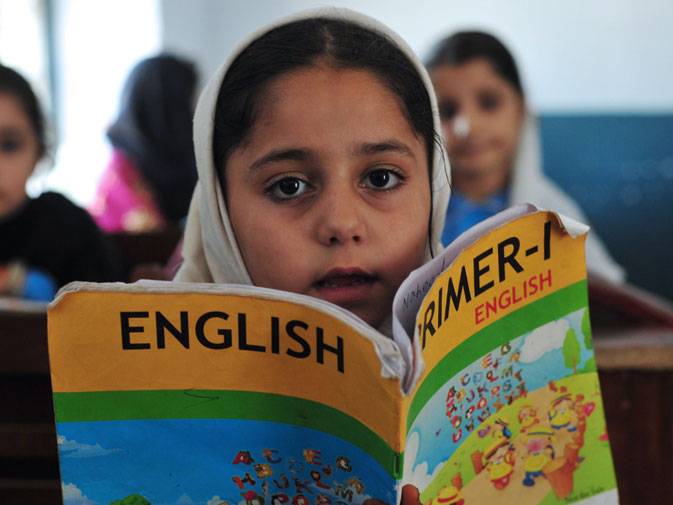
Chairing a meeting at CM House to review the status of public sector education in the province, he said, "Soon after taking charge, I declared an emergency in the education sector but the results are not encouraging”. There is a dire need for proper attention to be given to the weaknesses in the system so they could be improved, he told the education minister and other officials.
Shah said he was not happy with the state of schools in the province and that whether or not the dropout ratio was accurate, it was ‘quite disappointing’. He directed the education department to select 15,000 primary schools to be designated as model schools. These schools should be provided proper facilities, a proper teachers-student ratio should be maintained and their education process should be monitored via proper surveillance and inspections. This process would definitely improve education at primary levels, he said. Similarly, 1,000 secondary and higher secondary schools should also be selected as model schools, Shah directed.
Education officers get tablets to check attendance of teachers
This is the only way to improve them in phases, he explained, adding that it is surprising that government schools being managed by private partners are imparting good education and producing results. He directed the education department to work out a detailed plan to improve the overall education system, reduce the dropout ratio and develop capacity building of teachers.
The meeting was attended by Education Minister Jam Mehtab Dahar, Chief Secretary Rizwan Memon, Principal Secretary to the CM Sohail Rajput, Education Secretary Abdul Aziz Uqaili and Finance Secretary Hassan Naqvi among others.
Earlier, Uqaili said the enrolment target for primary education was fixed at 77% against which 65% has been achieved. The enrolment target for middle schools was set at 45% and 35% has been achieved, while the target for secondary education was fixed at 35% and 25% was achieved, he said. The secretary added that the literacy rate is 60% and a target has been set of 70% by 2018.
Problems in education: SHC CJ takes notice of poor condition of schools
He said that the latest published report of the Pakistan Education Statistics (2014-15) states that in Sindh there are a total 11.9 million children between the ages of five and 16, of which 6.66 million are out of school. The CM summarized that 55.6% of the province’s children are out of school, leading the education secretary to explain that the dropout rate at primary levels was 12.6% between 2014 and 2015 and every year it is reduced by 3%.
The meeting was informed that in 2016-17 there were 45,555 schools in the province, of which 42,383 are viable and 3172 nonviable. The overall enrolment in 2015-16 was 4,145,219, which was increased to 4,229,128 in 2016-17. This shows a difference of 83,909 or a 2% increase, Uqaili explained. While the enrolment rate increased, the number of teachers decreased, as in 2015-16 there were 156,216 teachers employed, which reduced to 150,787 in 2016-17. The 5,429 teachers retired or resigned due to the implementation of the biometric attendance system.
The chief minister directed the education department to prepare a detailed plan on how to improve education system, infrastructure and improve capacity building of the teachers and control drop out ratio and submit the same for his approval.
Meeting reviews new curriculum based on modern educational standards
Shoddy buildings
Dahar said that most school buildings in the province are in a dilapidated condition and therefore dangerous. The recent rain further damaged the structures, he said, adding that a survey of damaged and dangerous school buildings was conducted by the education works department in September, soon after the rain, in which 6,157 buildings were deemed damaged or dangerous.
"Around Rs17.28 billion is required to repair or reconstruct the buildings," the education minister said. The chief minister, however, said that the figures seemed to have been exaggerated.
Shah was told that necessary measures have been taken to strengthen governance in schools and 1,016 primary level headmasters have been appointed and an education management cadre been introduced.
No electricity
In the meeting it was pointed out that most government schools are functioning without electricity. This irked the chief minister, who questioned how it was possible to produce good students when they are forced to receive education without a fan or light.
More than 100 education dept officers found involved in corruption
Uqaili told Shah that K-Electric (K-E) has claimed a Rs119 million electricity bill. The chief minister directed Memon to call a meeting of K-E and the school education department to reconcile the bills. “This is unacceptable, said Shah. I will not tolerate a situation in which power connections of schools are disconnected for want of payment,” he stated. "We allocate funds for payment of electricity bills and this year the amount is Rs110 million," he said.
























1714024018-0/ModiLara-(1)1714024018-0-270x192.webp)









COMMENTS
Comments are moderated and generally will be posted if they are on-topic and not abusive.
For more information, please see our Comments FAQ